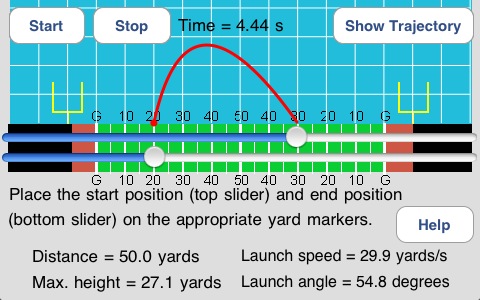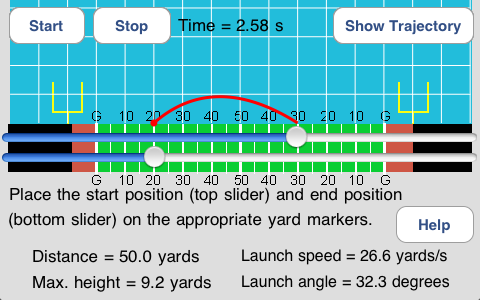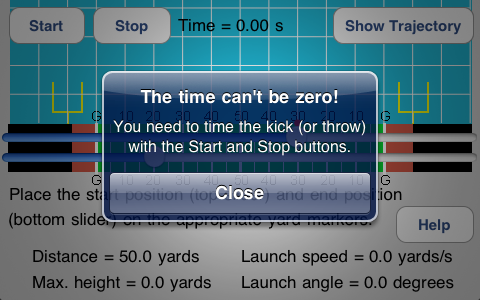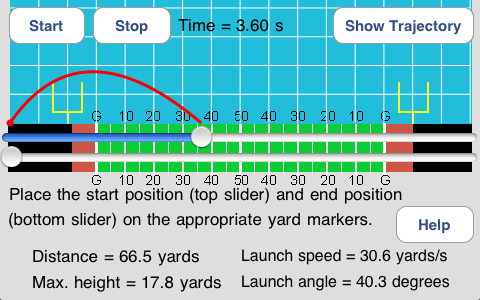
Link to the HangTime app on iTunes
The HangTime app is aimed at football fans who are interested in the kicking game in particular, although it can also be used to analyze passes, too.

The picture below shows the same situation as in the picture above, but the time was quite a bit less - this is consistent with a pass, instead of a kick. By the way, the squares on the grid above the field measure 10 yards by 10 yards.

Let's say your team lines up for a punt. Using the app, time the punt using the Start and Stop buttons. Start timing when the ball is kicked, and stop timing when the ball is either caught or hits the ground. Then, use the sliders to mark the position the ball was kicked from (not the line of scrimmage, but the position the ball was launched from), and where it first came down. Once you've done that, press the “Show Trajectory” button to see an approximation of the ball's path, as well as estimations of the maximum height reached by the ball, the ball's launch speed, and the launch angle. If you forget all this, just press the Help button on the app, and it will remind you, as shown below.

Also, if you mark the beginning and end points of the kick (or pass) and hit the "Show Trajectory" button without first timing the event, the app will remind you, as shown here. By the way, if you mess up the timing but you have a rough idea of what the time was (for instance, maybe the hang time is shown on the stadium scoreboard), just press the Start button again to re-set the timer, and use the Stop button to stop it at the appropriate time.

You can also use the HangTime app on kickoffs, field goal attempts (see below), and passes. Compare the kickers on your team to those on the opposing team, and you can compare quarterbacks, too.

Limitations – The statistics shown by the app, as well as the trajectory for the path of the ball, are approximations. The app uses a simple model, including air resistance in a very simple way, to figure these things out. The app does not account for the effect of the wind, so if there is a strong wind the stats and the path will definitely be off from the true values. Also, the app assumes that the ball has no lateral motion – if the ball has an appreciable across-the-field motion in addition to its downfield motion, just estimate the total distance between the start and end points, and plug that into the app using the sliders.
This web page was first posted on November 19, 2009.
Last update: November 29, 2009.
Note: this app was submitted to the app store on November 17, 2009, and was approved for sale on November 28, 2009.